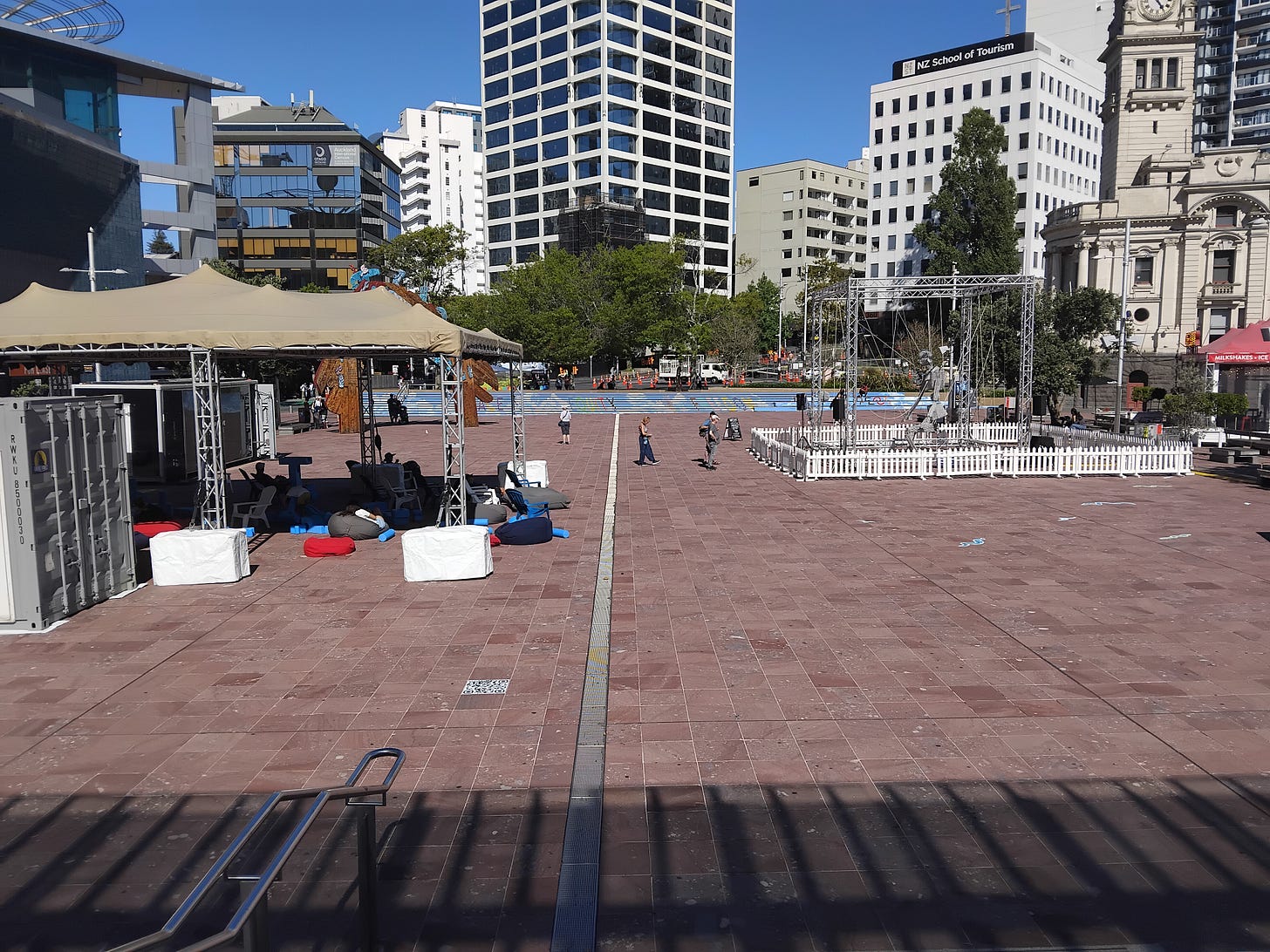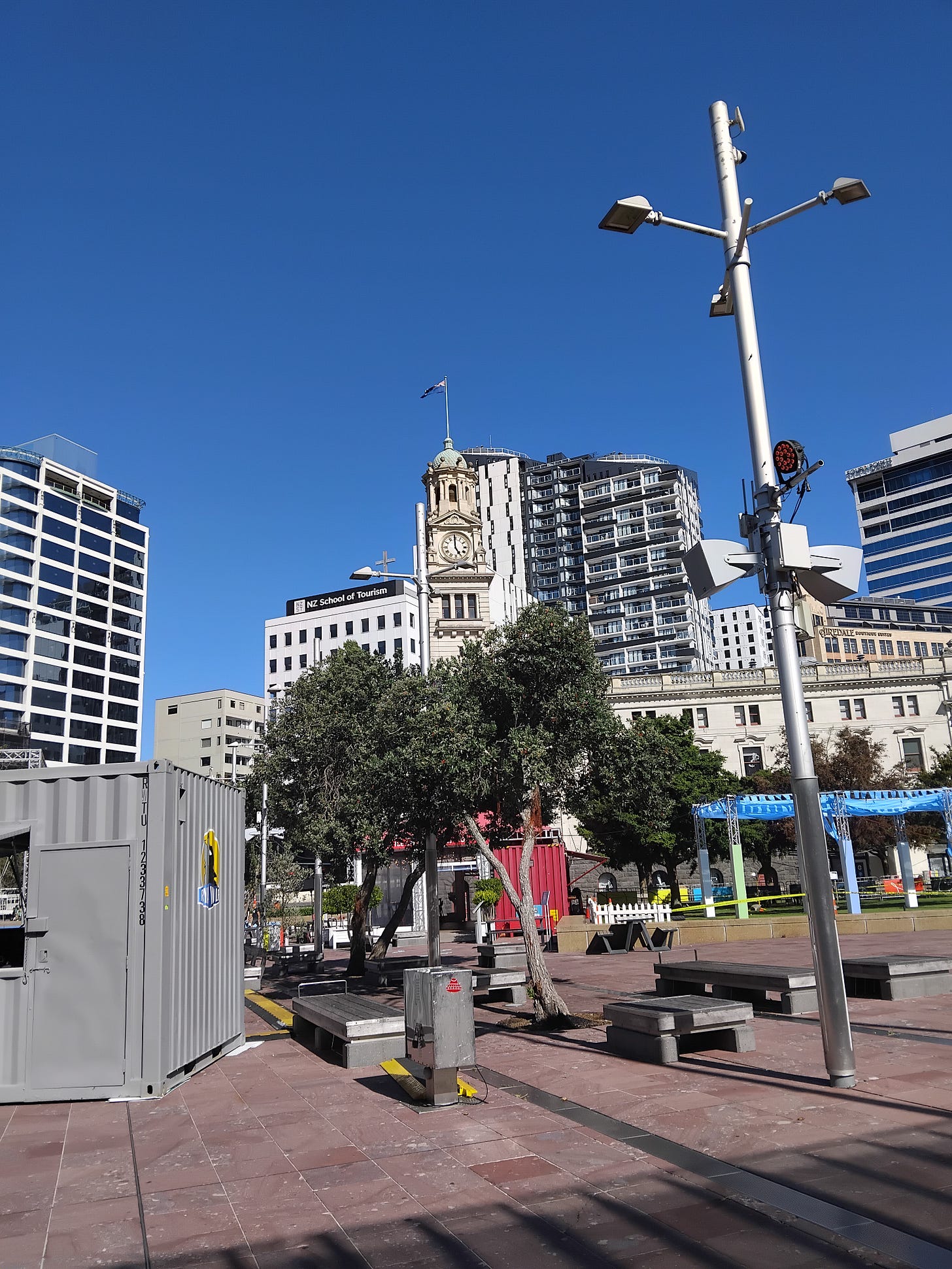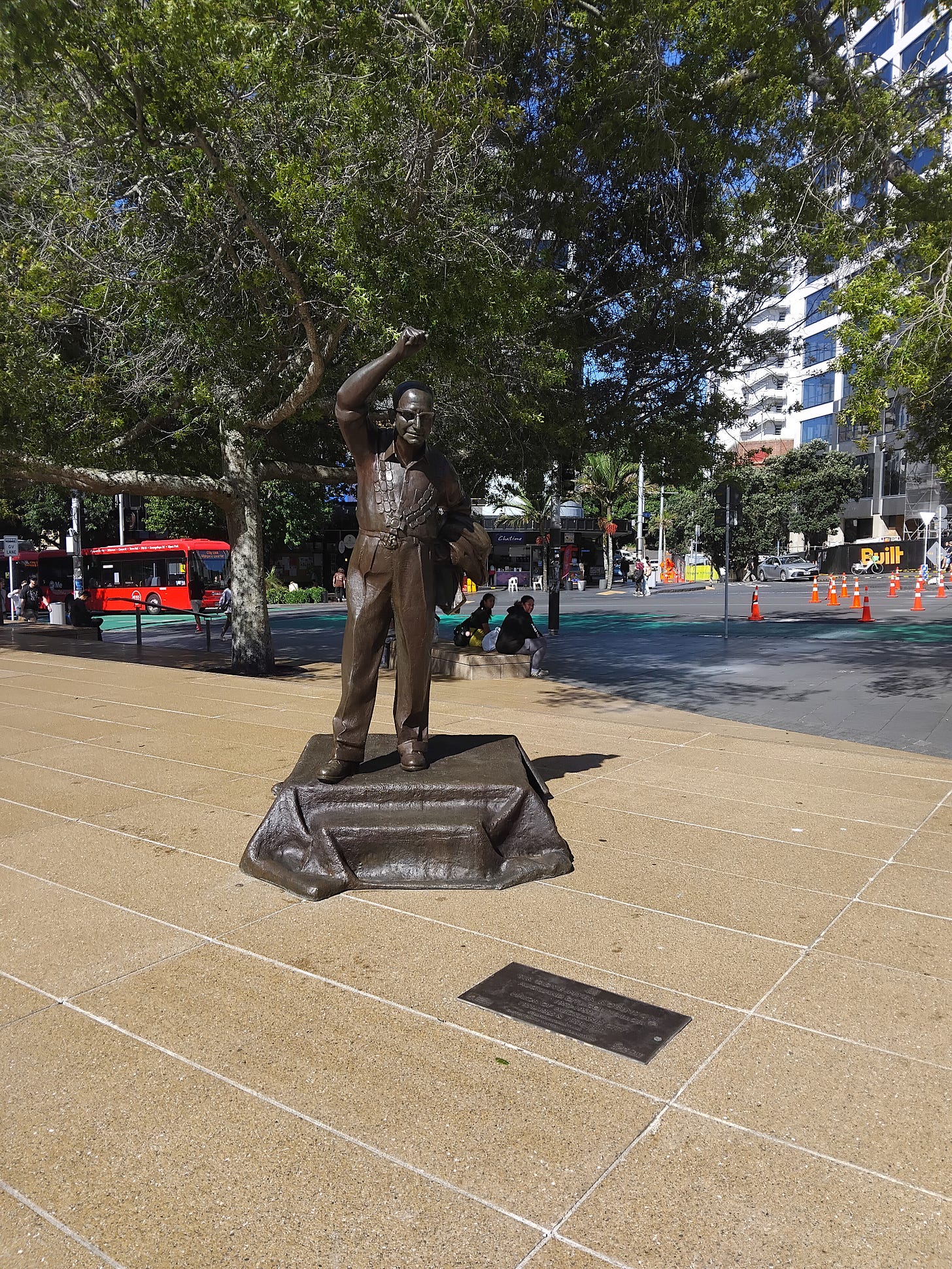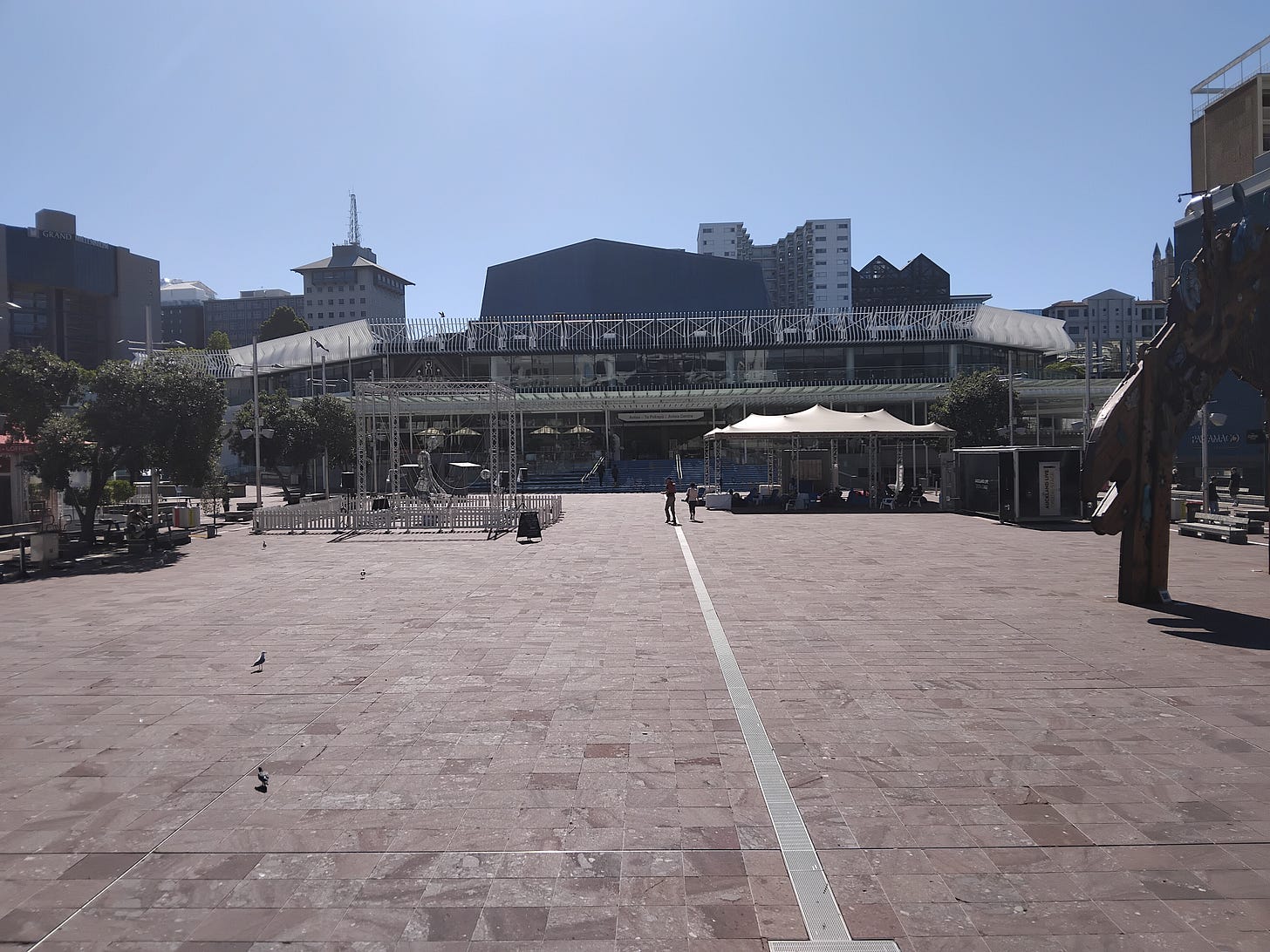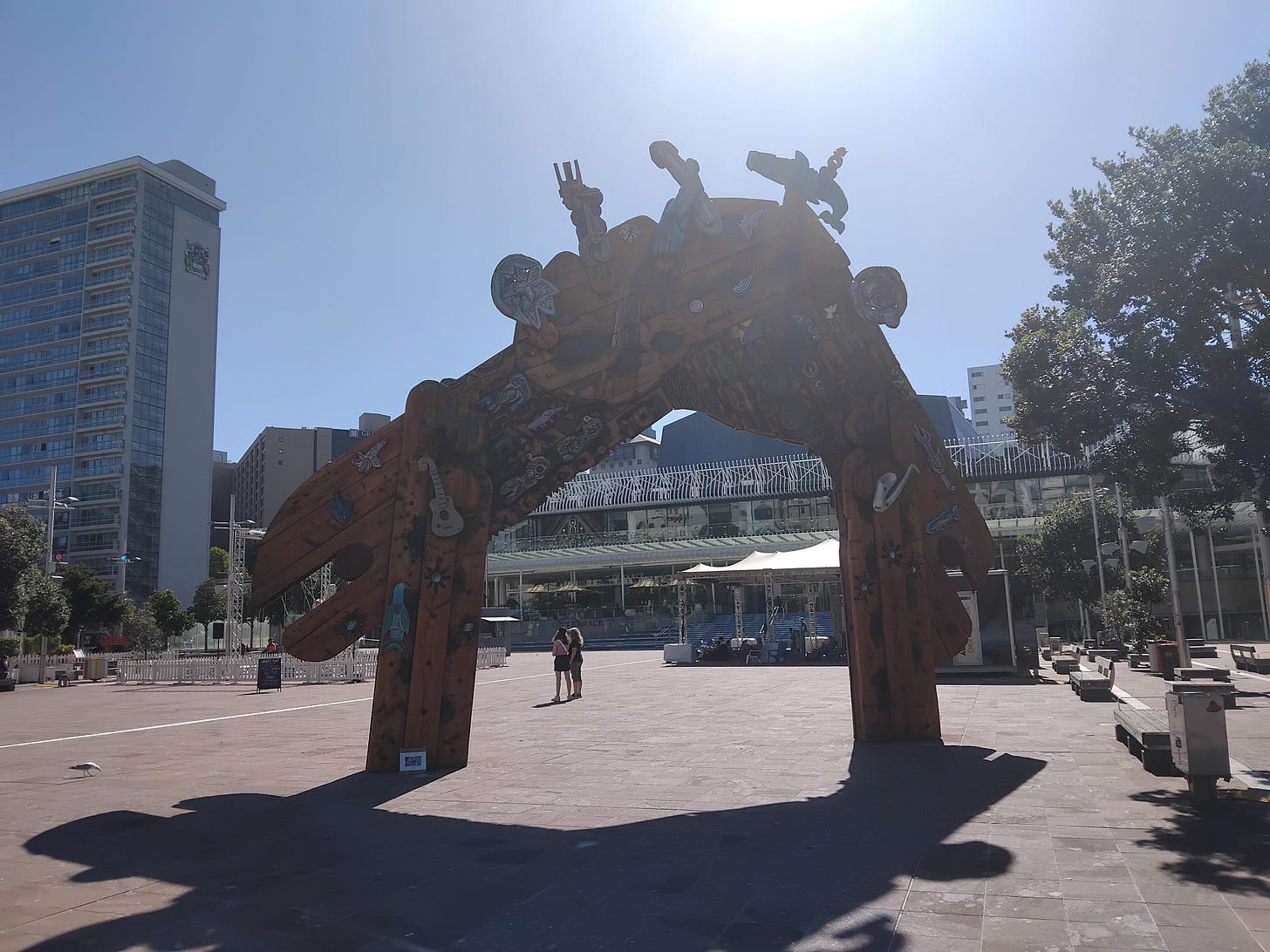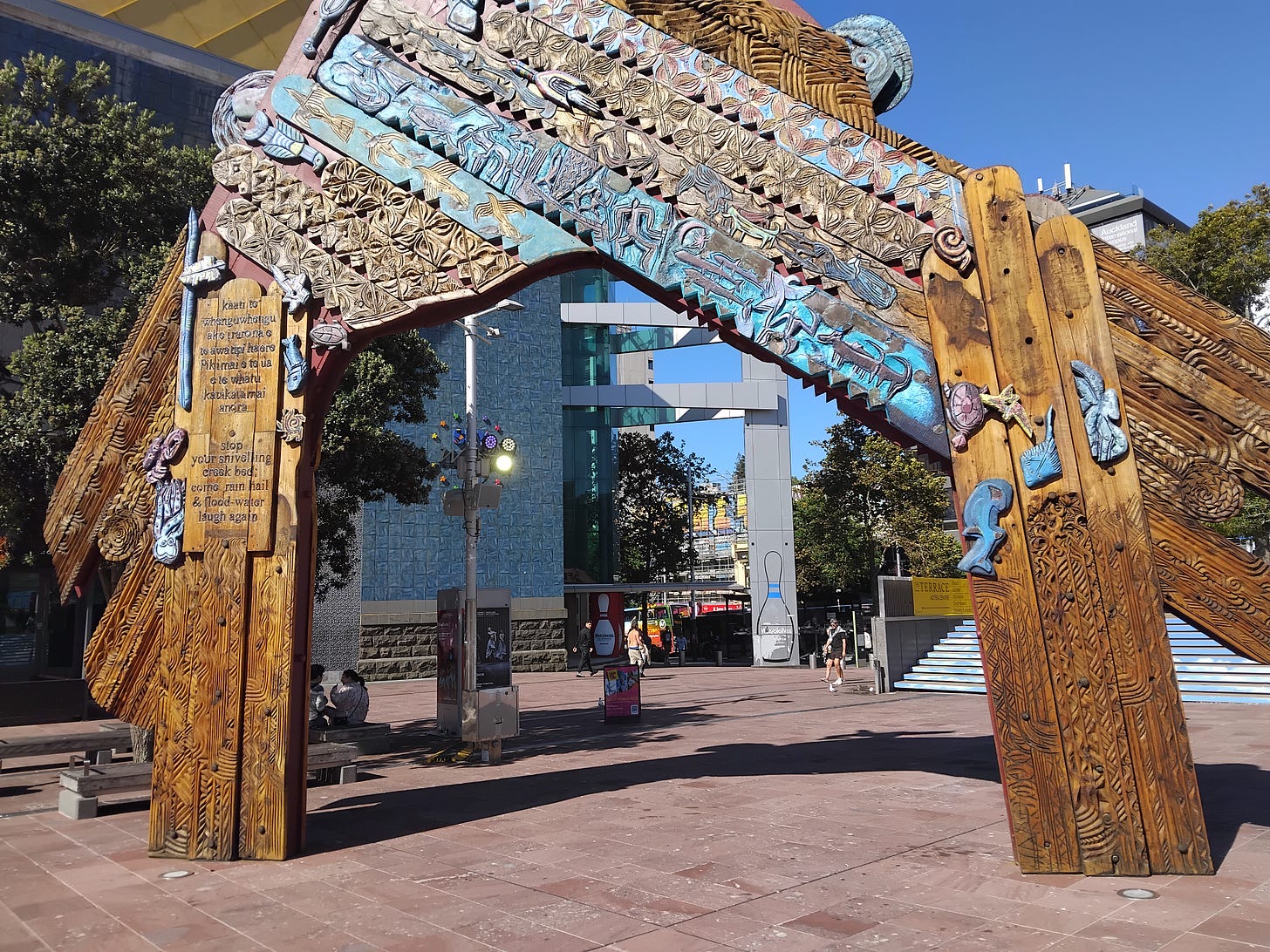Aotea Square: A Canvas for Us All
The place we make our own.
Aotea Square. What is it? What is it for? I mean the obvious answer is a giant slab of pavement in the middle of our city. Yet what do you feel when you actually sit there and think about it? What comes to your mind? Why do you go there? Those were the questions I thought about when I visited. Its one of those places that by themselves are nothing. That are empty. And while I went there to answer my own feeling of connection with the place as you will soon read, the scope of this piece expanded from my original plans. But I think that’s part of what I love about doing this, its not about if there is a correct way to do it, its about what feels right. And what I ended up doing? It felt right. I hope you enjoy.
Hot, very hot. That was the most glaring thing about walking into the center of Aotea Square the day of my visit in February. What was there on that day? Well, a pavilion, shading a collection of chairs and beanbags, filled with those looking to get out of the heat. Numerous people transited through the square, its expanse merely a path to another destination. The gateway sculpture Waharoa stands casting a long shadow in the afternoon sun. A group of skaters trundling in their corner. The statue of Mayor Robbie, fist in the air on his soapbox. The usual. The not so usual? A giant string puppet, from String Symphony, limp and ready for its next dance. Its also Auckland Pride Month and so the stairs off to Queen Street and up to the Aotea Centre have been painted in rainbows! So my answer to what was there? A hectic mess of all sorts of different and maybe even contradictory things!
After meandering around, looking at all the different goings on, I eventually seated myself (in the shade) on the stairs up to the Aotea Centre and just observed. From my perch, I watched as people hurried along to hide from the sun in clusters in the shade. People from all walks of life. My observations brought my own musings, about everything and everyone and why was it all there, but I started to wonder if this is something the other temporary denizens of this space thought about. Did they see the same things as I did? The wide range of objects and events, was this something they thought about? Well, what’s the best way to find out? To ask!
Once I collected my thoughts I stood and trotted up to a young woman, her name was Makenna, also perched on the stairs and asked her what she thought the point of Aotea is? What did it mean to her? Turns out Makenna, as she puts it, has a bit of a love/hate relationship with the square. As she works nearby (she had a branded uniform of some sorts on) she often comes here when she is tired and relaxes. So in a lot of ways for her the space was associated with work, and I imagine all the energy that a long day would take. For her though, the square also represented something else (love/hate relationship remember). Makenna talked about how she was apart of the climate protests, the school strikes, and so for her the space was also one in which voices were able to advocate for change. That here, there was the freedom to say what you want, and that gave her the feeling of hope. Hope that things can be supported, hope that the future can be brighter as people can push for the change they want to see in the world.
To her, politics was apart of the square with Auckland Town Hall, and its association with local government, a strong fixture visually. But what this also means is the possibilities are endless. The ability for change through the freedom to say what you want. The space for voices to advocate for change. The possibilities of the future.
I absolutely agree with her that there is always a layer of politics over the square, for one there is the aforementioned Town Hall, but also standing on his soapbox at the entrance is one of the colourful figures of Auckland’s political history Mayor Dove-Myer Robinson (or Robbie to, well everyone). In fact, arguably politics put the square here, and politics decides what we do with it!
With my apparently newly found penchant for talking to complete strangers about a square, I looped around a couple times deciding who my next interviewees were. I ended up talking to Mick and Leanna, who were a couple sitting on one of the benches, and their young daughter Molly-Rose, who was darting around them.
What was Aotea Square to them? Mick and Leanna talked about how it can be a good place for entertainment! To hang out with family and kids. When I think back to that day, the String Symphony, but more generally there’s plenty of other things that happen! Ice rink every winter (not that I’ve ever gone on it), cultural events and markets. But they also said there was opportunity to do more. Perhaps weekly markets, or events? As to them, they sometimes found there wasn’t much to do in the area other than shop. So why not more events?
As for Molly-Rose? She loved the touches of nature sprouting out of urban jungle. The trees and birds - specifically chasing the birds! She also loves dancing and singing, having performed with her school here. Speaking with Molly-Rose, and Mick & Leanna, I think Aotea is also a place of play and entertainment. Its a space for kids to enjoy whether primary school age as Molly-Rose, or the teenaged skaters always trundling around every weekend and school holiday. But, its also an opportunity to do so much more. Like Makenna’s feeling of hope for the possibilities of the future, Mick, Leanna, and Molly-Rose, also feel, in their own way, that potential for more to happen.
Given the diversity in their feelings about the space, you might ask the question. Who is this square for?
The answer I came to feels right.
You see, when you visit Aotea, the most consistent and prominent feature is the Waharoa sculpture.
It was finished in 1990 by artist Selwyn Muru, who passed away in January of this year, shortly before my visit, at the age of 86.
To quote the creator of the sculpture:
"The aim of this waharoa (gateway) is to welcome and embrace manuhiri to Aotea Square.”
When manuhiri (visitors) come to this space, they are welcomed immediately by this intricate masterpiece. Because public places should be for everyone, and Aotea Square is no different. But am I right in that feeling?
The final person I talked to before I left was a young man called Daniel. He was sitting in the sun on one of the benches, relaxing, and listening to music. He wasn’t the most enthusiastic of those I chatted to, in fact most of his answers were only a few words, and his response to the art and events going on was “it’s cool”. The funny thing is, sometimes you don’t need a whole lot of words to describe something accurately. When I asked him what Aotea Square is for? Well, to him its space. Open space. And honestly? That’s what it is. Its just open space. A whole lot of concrete. And yet we, as people, can make it so much more.


